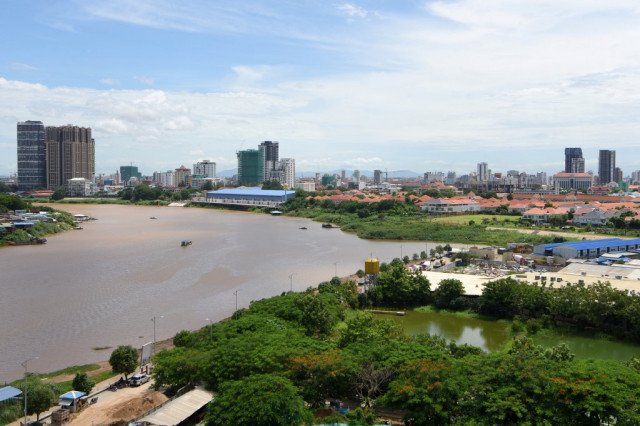Soil and Concrete Welcome Rains Differently

- Ky Chamna
- August 24, 2020 4:02 AM
Soil and concrete. Countryside and cities. When the monsoon arrives, one stares at the sky with worries. Raindrops bounce on different surfaces and different faces. A face of joyfulness and a face of sadness. Throughout the years, happiness and comfort take turn. The wind and the clouds determine how much people earn.
Soil and concrete. Countrymen and city dwellers. When the clouds scatter low and the wind cannot go slow, the ones celebrate and the others separate. Farmlands and offices. One tries to keep the water out, while the other handles it with ease.
Upon the monsoon, the one who walks on the soil prepares for harvesting while the one who walks on concrete begins sheltering.
Inside concrete jungles, amidst heavy rainfalls, sellers in markets seem frustrated with troubles. The troubles of enduring their businesses with less customers. Restaurants still stock food even though there are less orders. As the day comes to an end, some schools still receive less students. Heavy rainfalls do not just interfere with the indoor atmosphere. On the street, people race to compete. Time becomes their prime concern.
The race to seek shelter, the race to go even faster. The endlessly squeaking sounds from the vehicle brakes, the splashing water that the tires cause. As the water get sucked, some vehicles become stuck. More people walk their motorbikes, more cars cannot start. More houses experience leakage. More of the income is spent on fixing the damage. For the world full of concrete, rainfalls are welcomed with mixed emotion, to say the least.
Unlike city dwellers, countrymen are in need of moisture. After months of dryness, the lakes and the ponds are, once again, filled to the brim while water flows faster along the rivers and the streams. Critters such as crabs and frogs emerge seemingly from nowhere in rice fields. Agricultural farms slowly begin to yield.
There they band, the edible plants along the villages. Fish of hundreds of species is abundantly served on thousands of dishes. Empty land, full of soil and sand as well as dead plants, suddenly becomes a lively freshwater ocean, even though it is inland. The villagers celebrate while their income proliferate. Every bit of land where you go, small plants and trees there they grow. The forests are, once again, dense and the smell of the muddy red ancient volcanic soil can be sensed.
For the world full of soil, rainfalls are welcomed like a family member. A family member who helps sustain millions of other families. A family member who is a mother, Mother Nature as they call her.
However, good times do not occur all year round. As the monsoon switches pattern, differences in emotions begin to take turn.















